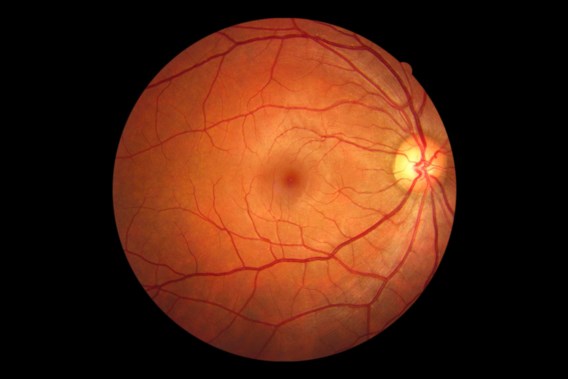In a small study, an experimental gene therapy has improved the vision of several people with a serious hereditary eye disease, Leber’s amaurosis congenita. In people with this disease, the retina does not work properly due to genetic errors. They have usually been severely visually impaired or blind since childhood.
With EDIT-101, an experimental drug based on the genetic cutting tool crispr-cas9 (crispr for short), American scientists were able to repair a gene defect and partially restored vision in 9 of the 14 participants. The researchers described their findings this week in the medical scientific journal The New England Journal of Medicine.
The drug under investigation, EDIT-101, consists of a harmless cold virus that delivers the molecular cutting tool in a targeted manner to the light-sensitive nerve cells of the retina. There it permanently removes an error in a gene called CEP290. Most abnormalities in Leber’s amaurosis congenita disease occur in that gene.
The retina, which lines the back of the eyeball, consists of light-sensitive nerve cells – rods and cones. The 100 million rods register light and dark, and are mainly located outside the center of the retina. The center of the retina contains mainly cones, up to 6.5 million. They only work in sufficient light and ensure that we see colors. In Leber’s amaurosis congenita, all these light-sensitive nerve cells no longer work properly. The retina degenerates and becomes thinner.
In all participants, the drug was injected once under the retina of the poorest seeing eye, in a low, medium or high dose. The other eye served as a control. The researchers tested the sharpness of vision with a letter card or with different black and white stripe patterns, and the sensitivity of the retina to blue, white and red light. The patients were followed for six months to a year and a half.
Subtle improvements
9 of the 14 participants showed subtle improvements in some aspects of their vision. For example, six participants, including two children, improved their perception of colors. Some of these participants, as well as three others, experienced a slight improvement in acuity, or the mobility of the eye when following a maze. There were no serious side effects from the treatment.
“Very nice, this is the first application of CRISPR in the eye,” says Camiel Boon, professor of ophthalmology at the Amsterdam UMC. “It is interesting that the treatment seems safe so far and has effects, but these are subtle and there are still few patients. There needs to be a larger study before I fly the flag.” The question is whether such a follow-up study will be conducted, he says. “There are very few patients with this rare condition who are suitable for this treatment, and many of them have already been treated with other experimental therapies.”
He also points out possible side effects that may only occur later. With another form of gene therapy in which a completely healthy gene is introduced, the retina became thinner again over time in some of the patients – possibly due to inflammation or excessive activity of the new gene.
Still, Crispr does have a future for some treatments, he thinks. “Complete healthy genes are sometimes too large to be inserted into the retina with our existing techniques. Crispr itself is small enough to be inserted.”
The development of medicines based on CRISPR is booming: in November last year, the very first treatment using the genetic cutting technique was approved in the United Kingdom, the United States and the EU, against two serious blood diseases: sickle cell disease and beta-thalassemia. And in February, the first patients were cured of a serious hereditary swelling disease thanks to an experimental treatment with a CRISPR drug.
© NRC


